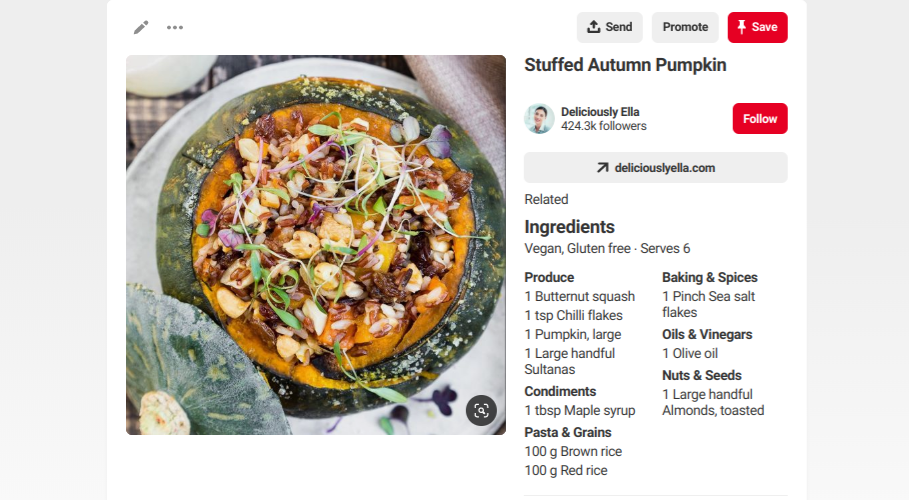
When someone visits your website, you only have seconds to capture their attention. Ideally, they stick around long enough to interact with the pages, check out your products, and read your content.
But what if they leave before you even have a chance of converting them? Then it’s time to make some changes to increase user engagement with your content – which will lead to loyal customers and higher sales.
Use these 6 simple tricks to boost content engagement on your website:
1. Focus on the user, not your business
Most companies make the mistake of waxing poetic about their products, services, or features. Contrary to popular belief, consumers aren’t focused on what your product is but rather what your product can do for them.
Content frameworks can help you focus the content on each page of your website (and reduce clutter) by defining:
- Your goals for each page
- Key user messaging
- Where you want the user to go next
We like the core model framework that covers business goals, user tasks, inward paths, forward paths, and core content.
2. Make your website easy to read
Most people won’t take the time to read huge blocks of text that are over a few hundred words.
Break up your points into paragraphs with 1-3 sentences, bullet points, or numbered lists. This is much easier to digest and keeps users on your website longer.
Mint, a popular application for managing money, does a fantastic job of organizing their text into a format that’s easy to read. They start with one clear, intriguing headline followed by a short paragraph and bullet points. The way they break up content makes users want to keep reading.

(Image from mint.com)
Free tools like Readable can give you an idea of how your content is going to perform. It uses a combination of algorithms to analyze text, grade your writing (based on how easy it is to understand), and offer tips on improving the copy’s readability.
3. Craft clearly-defined CTAs
You need clear, powerful call-to-action (CTA) phrases to generate leads and drive sales. Think about your business goals and audience when deciding the placement and phrases used in your CTAs. Perform A/B tests to see which messages resonate best with users on your website.
Take a look at Uber’s website. Right away, the user can find what they are looking for and know where to go to next thanks to the clearly defined CTAs.

(Image from Uber)
4. Write high-quality, valuable content
Stick to writing high-quality content that’s unique, interesting, or educational. You should know your buyer persona like the back of your hand — and everything you write should focus on solving their problems and answering their questions.
Appeal to your target audience’s emotions with storytelling content, for more meaningful connections with your brand. The more your audience is drawn to what you write, the more your user engagement will increase.
Ideally, your business has a blog where you can continually attract readers through content marketing. Not only will a blog engage your audience, but it’ll drive leads to your website. In fact, website conversion rates are six times higher for businesses that use content marketing as opposed to traditional marketing methods.
5. Guide users to another part of your website
Leading users to other parts of your website is a clever way to boost user engagement. Let’s say someone ends up on your blog. They are more likely to stay on your blog longer and read more posts if you have a sidebar that shows other related posts they might be interested in.
Crazy Egg’s blog, The Daily Egg, has a sidebar that shows featured articles, topic categories, and a free ebook. By directing readers to other blog posts, they stay on the website longer and view more pages. This leads to higher user engagement and increased sales rates.

(Image from Crazy Egg)
6. Optimize your content for sharing
Your website content doesn’t exist in a vacuum; oftentimes, potential customers’ first exposure to your content will be on social media, where someone has shared it. Brands who want to optimize the customer experience should optimize their website content — from headlines to images to metadata — with this in mind.
If they’re engaged, users will want to share your content on their social channels. Streamline this process for them by adding icons, breaking content up into more sharable chunks (like pull quotes), and even adding default text for when they Tweet or post. The moment they hit send on one of those buttons, your user engagement rate has gone up.
Figure out where your target customers spend most of their time online and optimize your content accordingly with images and meta descriptions. Food bloggers tend to be experts at this — they make sure their web content is optimized for Pinterest (where they know most of their readers hang out). Famous food blogger, Deliciously Ella, sets up pins with an eye-catching photo and recipe:

(Image from Deliciously Ella)
This makes it easy for people to share her content and attracts new visitors to her website.
Looking for high-quality content that converts for your website? Reach out to us today, and we’ll get started on an effective content strategy that drives results.
